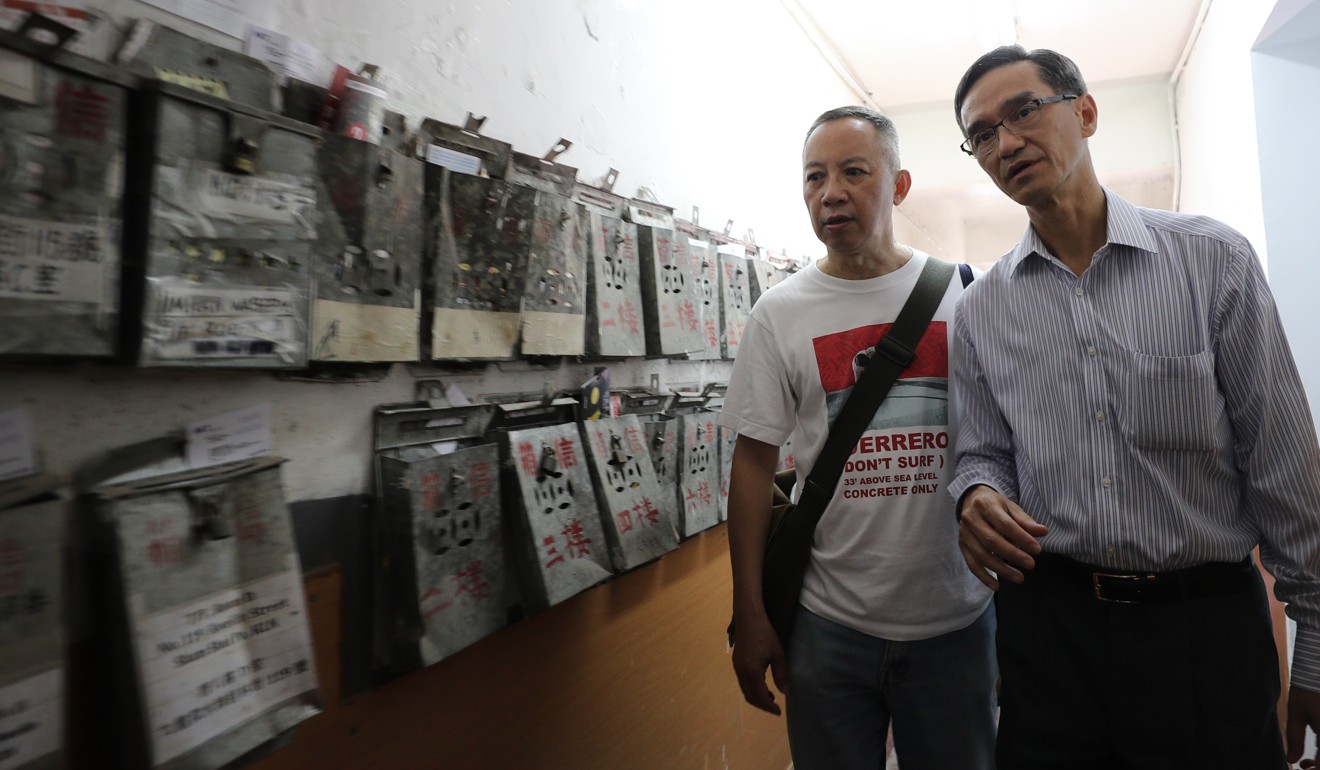
Hong Kong can solve its housing problems without finding more land – just don’t ignore the facts
Ian Brownlee says the top priority for addressing Hong Kong’s housing issues is enacting practical measures for those inadequately housed. If the task force on land supply ventures into schemes for increasing supply in the hope of bringing down prices, the results will be disappointing

The task force on land supply’s consultation document should provide a factual starting point for a rational public discussion leading to realistic and achievable public policy objectives. Unfortunately, facts are not given priority and the process is likely to result in unachievable policy objectives. The most sensitive area and biggest driver for land is housing, and here the analysis has fundamental problems.
The demand for housing is derived from the government’s 2030+ planning strategy, which took its figures from the Long Term Housing Strategy. Its figures largely came from the Housing Department’s mechanisms for assessing eligibility for public housing. The assessment mechanism is unrealistic and unrelated to real housing needs as it grossly overestimates what is required. It also assumes that the only way to reduce the housing waiting list is through more housing rather than being more innovative.
While there is an undoubted need for a rational supply of serviced land for development, the land supply discussion fails when the facts are examined. However, given the entrenched nature of the process, and despite some questioning from the Legislative Council, this fundamental analysis has not been carried out. Problems arise because there is no definition of “affordability”, while there is no examination of possible changes to policy and administrative measures to minimise development.
The urgent problem is to provide homes for those who are inadequately housed. This appears to be a massive problem, given the publicity surrounding those in subdivided apartments and caged dwellings. However, there are only about 120,000 households inadequately housed out of 2.51 million – around 5 per cent. The allocation system for public housing gives no priority to these people, instead placing them in the long queue. There is no reason why these people should be living in terrible conditions.

Top priority should be given to ensuring they are all properly housed. A task force should be established to ensure this is done within three years, to permanently remove the problem. The issue here is not the people, but the existence of inadequate housing. During the 1980s-era squatter clearance programmes, when a household moved to public housing, the squatter huts were removed.
So, today, the subdivided flats must be restored to their originally approved layout. The chairman of the task force, Stanley Wong Yuen-fai, observed during a recent visit to caged housing that some had been there for more than 50 years. He has to solve this problem by making it a priority.
The average waiting time for public rental housing is now more than 4½ years. But if only 120,000 households are inadequately housed, who are all the others on the waiting list? This is not a physical housing problem. It is an attempt to address a poorly defined affordability problem for the lower-income group (the lower 50 per cent) renting in the private market.
It is really a question of how much disposable income this group should have after paying for housing, and it is a social welfare issue, not a housing one. The criteria and process used by the Housing Department to define eligibility for public housing is completely unrelated to physical housing needs, and unrelated to whether sufficient public housing can be built.
It should therefore be resolved in a different way: all the households on the waiting list should be offered a “housing voucher” to subsidise their existing rental. The subsidy should be the same as the one provided through renting a public flat. Immediately, their disposable income would improve, the affordability problem would be resolved and there would be no need to wait for public housing. The problem is not clearly defined and ways to achieve the objectives, other than building more housing, have not even been considered. The same vetting process that puts people on the waiting list could determine their eligibility for a housing voucher.
The task force quotes one subsidised Home Ownership Scheme project from 2017, in which the 2,100 units offered were oversubscribed by almost 49 times. If there is to be a subsidised housing purchase scheme (and that is questionable), then the eligibility criteria should also be better focused on those most in need. The number of those eligible should be closer to the number of flats being produced.
Increasing the supply of private housing will not reduce prices. Academic research has shown that, for more than 30 years, there has been no correlation between housing supply and prices. Irrespective of supply, or artificial measures to control demand, prices continue to rise. Hong Kong is an expensive place to live, and a household should anticipate paying 45-50 per cent of their total income for housing.
The task force is being unrealistic if it expects to make private housing more affordable merely by building more. It is also unrealistic if it expects to provide a greater opportunity for people to buy flats. The current controls on flat purchases by the Monetary Authority and stamp duty are the greatest limitations on young people’s ability to buy flats. These institutional constraints need to be addressed quickly, rather than creating false expectations that an increase in private property supply will result in a reduction in prices.
The task force also assumes that a larger floor area per household should be achieved to improve livability. This, plus a false assumption of lower plot ratios of development to improve livability, overestimates the need for land. Flat size itself is not an indication of better livability; better urban design and more public facilities are.
Hong Kong designers can get the best out of small flats. Comparisons of flat sizes with other high-rise cities facing the same issues as Hong Kong points to a need to be innovative and realistic. Most people will not be able to live in large flats in Hong Kong, but there is a need to ensure basic requirements.
There is no reason why the government could not specify a minimum flat size of 150-180 square feet, being self-contained with a bathroom and kitchen. Households have different requirements at different times, and a range of housing sizes is required to meet changing needs.
The task force will fail if it does not look closely at the underlying facts, and define terms and objectives. It must seek solutions other than land production. The relevant institutional and policy constraints should be carefully reconsidered before unnecessarily committing our seas and green areas to irreversible change.
Ian Brownlee is the managing director of planning and development consultancy Masterplan Limited and a member of the Citizens Task Force on Land Utilisation